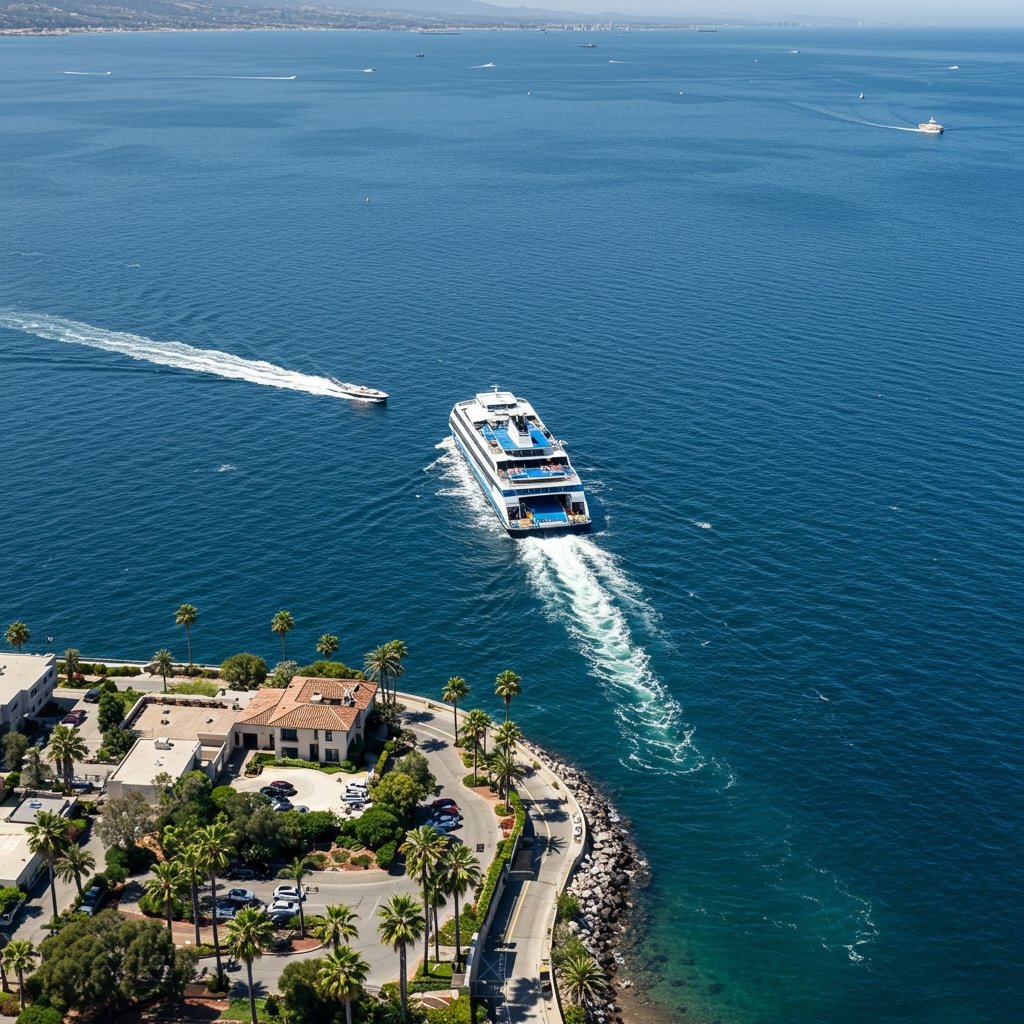New Era for Southern California Coastal Transport: High-Speed Ferry Launches
San Diego, CA – Southern California’s congested coastal highways are set to gain a significant alternative as California Coastal Transport Inc. announces the forthcoming launch of the Pacific Breeze Line, a new high-speed ferry service. This initiative promises to directly link three major Southern California hubs – San Diego, the Port of Los Angeles (San Pedro), and Santa Barbara Harbor – offering travelers a fast, scenic, and potentially stress-reducing way to navigate the coast.
The service is scheduled to officially commence daily round trips on April 15, 2025, marking a pivotal moment in regional transportation infrastructure. The Pacific Breeze Line aims to capitalize on the region’s extensive coastline, providing a maritime travel option that bypasses the increasing traffic volume and delays often encountered on Interstate 5 and U.S. Highway 101.
Service Route and Frequency
The Pacific Breeze Line will operate daily, ensuring consistent connectivity between its designated ports of call. The route is designed to serve key points along the Southern California coast:
* San Diego’s Embarcadero: A vibrant waterfront area offering easy access to downtown San Diego’s attractions, hotels, and convention center.
* Port of Los Angeles (San Pedro): A crucial stop linking passengers to one of the world’s busiest ports, with proximity to attractions like the USS Iowa Museum and connections to the broader Los Angeles metropolitan area.
* Santa Barbara Harbor: Providing direct access to the picturesque city of Santa Barbara, known for its beaches, Spanish architecture, and wine country.
This three-stop configuration facilitates travel not only between the endpoints (San Diego and Santa Barbara) but also allows for convenient shorter trips, such as San Diego to Los Angeles or Los Angeles to Santa Barbara, offering flexibility for both commuters and tourists.
Advanced Vessels for High-Speed Travel
The backbone of the Pacific Breeze Line service will be a fleet of advanced catamarans. These modern vessels are specifically designed for speed and passenger comfort in coastal waters. California Coastal Transport Inc. highlights the catamarans’ capability of reaching speeds of up to 35 knots. This high operating speed is critical to the service’s value proposition, significantly cutting down transit times compared to traditional ferry services or driving, particularly over longer distances.
Catamarans, with their dual-hull design, offer enhanced stability, which is expected to contribute to a smoother ride even in varying sea conditions. The design also allows for spacious passenger cabins, offering amenities aimed at making the journey pleasant and productive, such as comfortable seating, onboard services, and potentially Wi-Fi access.
Addressing Traffic Congestion and Boosting Tourism
One of the primary motivations behind the launch of the Pacific Breeze Line is to offer a viable and attractive alternative to the notorious traffic congestion plaguing Southern California’s coastal road network. Millions of residents and tourists travel along this corridor annually, facing unpredictable delays that impact travel time and quality of life.
By providing a direct, high-speed sea link, the ferry service aims to:
* Reduce Travel Times: Offering a time-efficient alternative, especially during peak travel periods or weekends when road traffic is heaviest.
* Enhance Travel Experience: Providing a scenic journey along the coastline as opposed to the often-monotonous experience of highway driving.
* Stimulate Tourism: Facilitating easier inter-city travel is expected to boost tourism in San Diego, Los Angeles, and Santa Barbara. It opens up new possibilities for day trips and multi-city itineraries for visitors arriving from outside the region, as well as making it simpler for Southern California residents to explore neighboring coastal communities.
The increased accessibility is anticipated to have a positive economic impact on businesses in the areas surrounding the harbors and within the destination cities, ranging from hospitality and retail to local transportation services.
Funding and Investment
The development and implementation of the Pacific Breeze Line project have received support through public investment. California Coastal Transport Inc. confirmed that the initiative is partly supported by state transportation grants. This signifies a recognition by state authorities of the potential for marine transportation to play a more significant role in the region’s overall transit strategy and underscores a commitment to exploring multimodal solutions to transportation challenges.
The grants likely contribute to infrastructure development at the ports, vessel acquisition, or initial operational costs, demonstrating a collaborative effort between private enterprise and public funding bodies to enhance regional connectivity.
Fares and Accessibility
Initial fare structures for the Pacific Breeze Line have been announced, with tickets expected to start at around $85 for a one-way trip between the endpoints (San Diego and Santa Barbara). While this is the quoted price for the full route, it is anticipated that fares for shorter segments (San Diego to LA, or LA to Santa Barbara) will be proportionally less, though specific pricing for these routes was not detailed in the initial announcement.
California Coastal Transport Inc. indicated that booking options would include online platforms, providing travelers with the convenience of planning and purchasing their trips in advance. Details regarding potential ticketing offices at the harbors or discounted fare options (e.g., for children, seniors, or frequent travelers) are expected to be released closer to the launch date.
A Look Ahead
The introduction of the Pacific Breeze Line on April 15, 2025, represents a bold step forward in diversifying Southern California’s transportation landscape. By offering a fast, comfortable, and direct link between major coastal cities, California Coastal Transport Inc. is poised to provide a compelling alternative to driving. The service holds the potential to not only ease congestion on key highways but also to unlock new opportunities for tourism and regional economic growth. Anticipation is high among residents, tourists, and local officials regarding the impact and success of this new high-speed coastal connection.



















